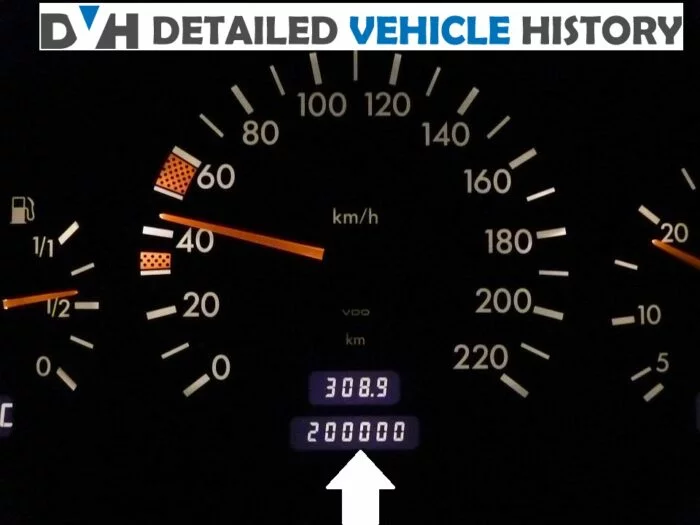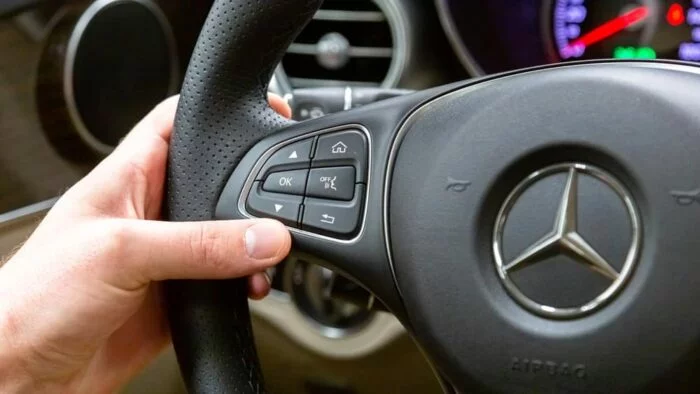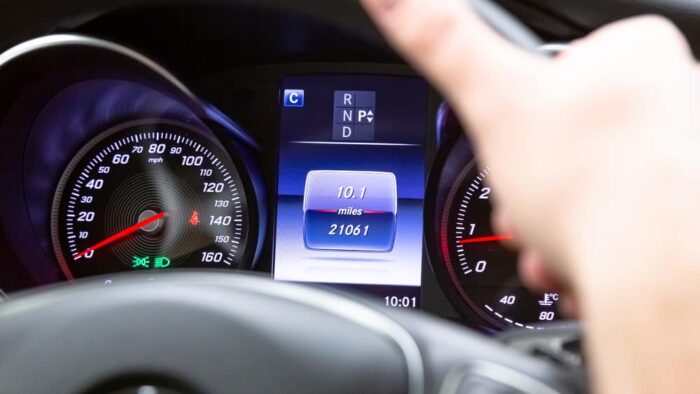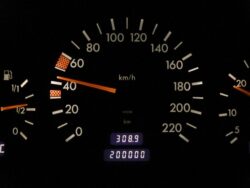Understanding how to read mileage on a car will help you know when the vehicle is due for routine maintenance.
Additionally, knowing the mileage is also beneficial if you’re looking to buy a used Mercedes-Benz.
A vehicle with high mileage is expected to have a high wear rate compared to the one with low mileage.
The Mercedes mileage display helps buyers and sellers of used cars to estimate the cost of a particular car.
Let’s dive right in.
How to Perform a Mileage Check on Mercedes-Benz
Here’s a quick step-by-step on how to check the mileage on your Mercedes-Benz’ odometer:
- Start your car, and place your hands on the steering wheel.
- Find and note the locations of buttons with the up, down, and “OK” on your steering wheel. These buttons control what’s displayed at the center of your screen.
- Press the up or down button until your screen shows the mileage of the car.
Benefits of Knowing the Mileage of a Mercedes-Benz
The mileage of a Mercedes-Benz is a crucial piece of information that can tell you a lot about the car’s overall condition and value. Here’s how knowing the mileage can help you:
1. Assessing Value and Condition:
Higher mileage (generally above 100,000 miles) typically indicates a lower price. You can use mileage as a benchmark when negotiating a fair price for a used Mercedes-Benz.
On the other hand, lower mileage (generally below 50,000 miles) suggests a car in potentially better condition, with less wear and tear. This can translate to a higher price.
2. Predicting Maintenance Needs
Mercedes-Benz, like any car, has scheduled maintenance intervals. Knowing the mileage allows you to anticipate upcoming maintenance costs.
3. Identifying Potential Issues
Very high mileage (well above the average for the car’s year) could be a sign of potential future problems. It might suggest the car requires more significant repairs or replacements sooner than later.
By checking the mileage, you gain valuable insight into a Mercedes-Benz’s past use and can make informed decisions about its value, potential maintenance needs, and possible underlying issues.
Routine Mercedes-Benz Maintenance Guide Based on Mileage
Now that you know how to see the mileage of your Mercedes-Benz, let’s try to understand what the distance actually means for you:
Every 10,000 miles:
- Oil change and filter replacement: This is essential to remove dirty oil and buildup that can harm your engine.
- Tire rotation: This helps ensure even wear and tear on your tires.
- Brake pad and rotor inspection: A mechanic can check the thickness of your brake pads and rotors to determine if they need replacement.
- Top off fluids: Check and top off fluids like coolant, brake fluid, and windshield washer fluid as needed.
Every 20,000 miles:
- Oil change and filter replacement: Repeat the oil change and filter replacement following the manufacturer’s recommended intervals.
- Tire rotation: Continue to rotate your tires regularly.
- Cabin air filter replacement: The cabin air filter helps clean the air you breathe inside the car. It’s generally recommended to replace it around 20,000 miles.
- Air filter inspection: A dirty air filter can reduce engine performance. Get it inspected to see if it needs replacement.
- Spark plug inspection: Spark plugs can wear out over time. A mechanic can inspect them to see if they need replacement.
Every 30,000 miles:
- Oil change and filter replacement: Keep up with your regular oil changes.
- Tire rotation: Don’t forget to rotate your tires!
- Spark plug replacement: Spark plugs typically need to be replaced around 30,000 miles. Check your owner’s manual for the specific recommendation for your car.
- Transmission fluid change (automatic transmission only): For vehicles with automatic transmissions, the transmission fluid should be changed around 30,000 miles.
- Differential fluid change: The differential fluid lubricates the gears in the differential, which is part of the drivetrain. It’s typically changed around 30,000 miles.
- Coolant system flush: The coolant system flush helps remove contaminants and maintain the proper cooling function for your engine.
A Quick Tip for Buying a Used Mercedes-Benz
If you’re on the market for a used Mercedes-Benz, knowing how to perform a mileage check alone won’t be enough to reveal the full history of the car.
For all you know, the odometer may have been rolled back or the car may have been in an accident.
To avoid getting the short end of the stick with your used Mercedes-Benz, you can check the full vehicle history report. But if you just want to know the basic information of the car, like the year, make, model, trim, or window sticker by VIN you can use our free VIN decoder tool and license plate check (U.S. only).









